Dribbling, shooting drills for players of all skill sets
Too many times we’re faced with running drills in practice that alienate some of our players. As coaches, we become so focused on the nuances of a drill that we don’t take into account the ability of all team members to run it properly.
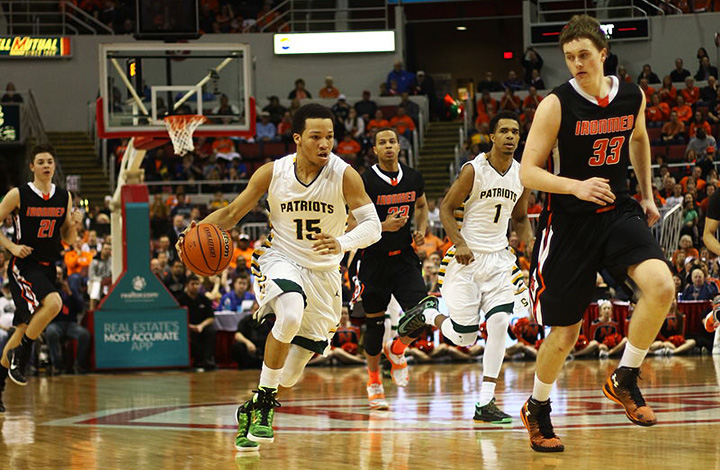
We devised a set of dribbling and shooting drills that you can use no matter your coaching situation. These drills work well with highly skilled players as well as those who need a lot of work.
Every player benefits from enhancing their dribbling, sprinting into a shot, passing with both hands, catching the ball and shooting, which are the focal points of this drill series. Before you jump into these drills, however, there are 13 important concepts to preach, teach, demand and expect of your players during this workout.
- Be open-minded and receptive to new concepts (be coachable).
- Come out of your comfort zone (take risks).
- Be an encourager of teammates.
- Give maximum effort.
- Do not display negative emotion toward yourself or your teammates.
- Be a triple-threat student — visual (seeing), auditory (hearing) and kinetics (doing).
- Be a leader with word and actions.
- Be a follower (when you are not the leader).
- Be a communicator both verbally and non-verbally.
- Acknowledge the efforts of others.
- Compete against yourself, the drill and your teammates.
- Go at your pace.
- Have fun without being silly.
» ALSO SEE: ‘Offense Wins’ drill teaches movement without the ball
These 13 concepts become the standards upon which you measure your workout. Positively reinforce these concepts when they are being met during the drills and point out when they are not. Eventually, your players should start to teach, correct, encourage and hold each other accountable. When this occurs, you have the makings of a championship team.
These drills are divided into two sections. The first concentrates on two-ball-dribble-and-place half-court drills. The second section deals with two-player, full-court team dribbling and shooting drills.
Two-ball place drills
These drills consist of players working with two basketballs and placing them in certain areas of the court. They are further broken down into one-player drills, two-player drills, and two-player drills using a partner.
→ One-player drills
Place a chair at each elbow.
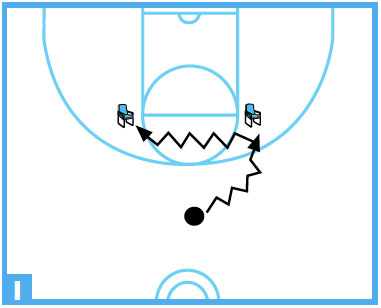 DIAGRAM 1: One-player drill (A). The player starts by dribbling two basketballs and races to the first chair. The player places the first ball in the chair while maintaining the dribble with the second ball. The player then dribbles to the second chair and places the ball in that chair.
DIAGRAM 1: One-player drill (A). The player starts by dribbling two basketballs and races to the first chair. The player places the first ball in the chair while maintaining the dribble with the second ball. The player then dribbles to the second chair and places the ball in that chair.
 DIAGRAM 2: One-player drill (B). With no basketballs in hand, the player sprints back to the first ball, grabs it out of the chair and takes a one-dribble jump shot.
DIAGRAM 2: One-player drill (B). With no basketballs in hand, the player sprints back to the first ball, grabs it out of the chair and takes a one-dribble jump shot.
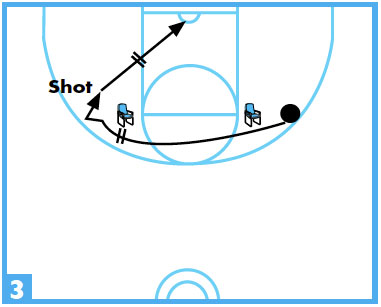 DIAGRAM 3: One-player drill (C). After taking the shot, the player sprints to the second ball, grabs it out of the chair and takes a one-dribble jump shot.
DIAGRAM 3: One-player drill (C). After taking the shot, the player sprints to the second ball, grabs it out of the chair and takes a one-dribble jump shot.
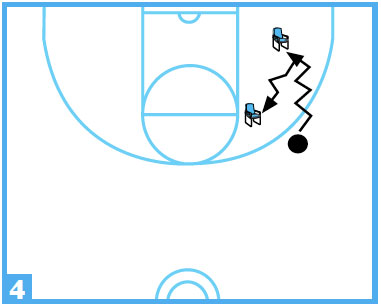 DIAGRAM 4: One-player drill modification (A). Modify this drill by changing the location of the chairs to the same side of the floor but with the same actions.
DIAGRAM 4: One-player drill modification (A). Modify this drill by changing the location of the chairs to the same side of the floor but with the same actions.
 DIAGRAM 5: One-player drill modification (B). This shows the player racing back to the first chair and taking a shot.
DIAGRAM 5: One-player drill modification (B). This shows the player racing back to the first chair and taking a shot.
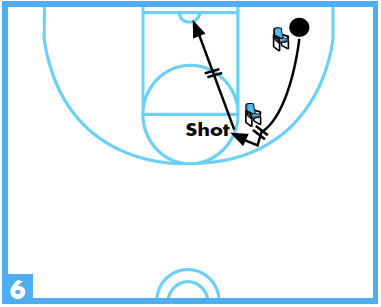 DIAGRAM 6: One-player drill modification (C). This shows the player racing to the second chair and taking a shot. Also, allow players to execute different moves instead of the one-dribble jumper, such as using a shot fake and crossover before shooting or taking a step-back jumper.
DIAGRAM 6: One-player drill modification (C). This shows the player racing to the second chair and taking a shot. Also, allow players to execute different moves instead of the one-dribble jumper, such as using a shot fake and crossover before shooting or taking a step-back jumper.
→ Two-player drills
Chairs now are placed on both the right and left side of the court at the elbows, and at the short corners just inside the 3-point line.
 DIAGRAM 7: Two-player drill (A). Follow the same movements as the one-player drill only with a player on each side of the court. In this example, both players start by dribbling two basketballs. They dribble to the first chair, place a ball there, then dribble to the second chair and place a ball in that spot.
DIAGRAM 7: Two-player drill (A). Follow the same movements as the one-player drill only with a player on each side of the court. In this example, both players start by dribbling two basketballs. They dribble to the first chair, place a ball there, then dribble to the second chair and place a ball in that spot.
 DIAGRAM 8: Two-player drill (B). Both players race back to their respective first chairs, pick up the ball, and execute a scoring move and shot.
DIAGRAM 8: Two-player drill (B). Both players race back to their respective first chairs, pick up the ball, and execute a scoring move and shot.
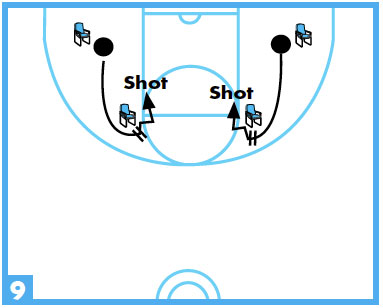 DIAGRAM 9: Two-player drill (C). Both players finish the drill by completing the action by running to the second chair, grabbing the ball, making a scoring move and taking a shot.
DIAGRAM 9: Two-player drill (C). Both players finish the drill by completing the action by running to the second chair, grabbing the ball, making a scoring move and taking a shot.
→ Two-player drills using a partner
In this part of the workout, the two players actually run off each other instead of being independent on opposite sides of the court.
 DIAGRAM 10: Two-player drill using a partner (A). This time, your players start by going to opposite chairs to begin the progression. The player on the left places a ball in the chair on the baseline, then places a ball in the chair on the elbow. That player sprints back to the chair on the baseline, executes a move and takes a shot.
DIAGRAM 10: Two-player drill using a partner (A). This time, your players start by going to opposite chairs to begin the progression. The player on the left places a ball in the chair on the baseline, then places a ball in the chair on the elbow. That player sprints back to the chair on the baseline, executes a move and takes a shot.
The player on the right starts by dribbling to the chair at the elbow, places a ball there and continues to dribble to the baseline chair to place a ball in that spot. That player then sprints back to the elbow chair, executes a move and takes a shot.
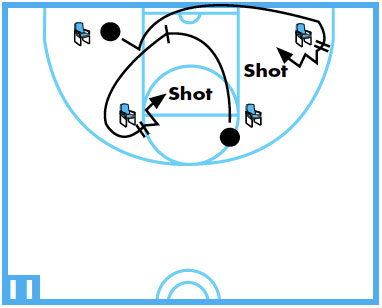 DIAGRAM 11: Two-player drill using a partner (B). Now, instead of the players just moving on to the next chair in their sequence, one player (typically the one who scores first) sets a screen for the other.
DIAGRAM 11: Two-player drill using a partner (B). Now, instead of the players just moving on to the next chair in their sequence, one player (typically the one who scores first) sets a screen for the other.
The player uses the screen and moves to the chair with a basketball on the opposite side of the floor. That player grabs the ball, makes a move and takes the shot. The screener does the same thing on the other side of the court.
Two-player, full-court drill
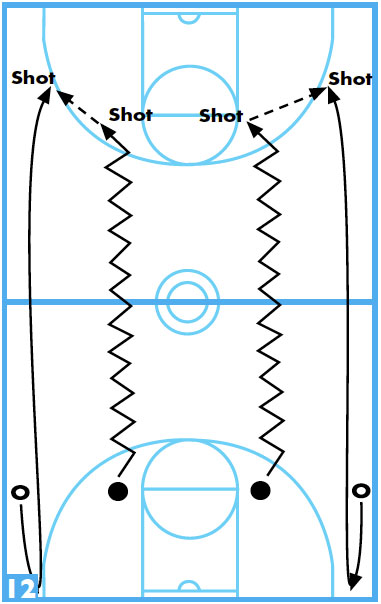 Add more conditioning into your dribbling and shooting drills by running them the full length of the court.
Add more conditioning into your dribbling and shooting drills by running them the full length of the court.
DIAGRAM 12: Two-player, full-court drill (A). Start with four lines. The lines at each elbow have two basketballs each. The two lines on the wings (outside the 3-point line) do not have a basketball. All four lines are facing in the same direction.
The players with the two basketballs speed-dribble down the court to the opposite 3-point line. The players on the wings turn and run toward the near baseline, touch it, then sprint to the other end of the court. The wing players must work hard to catch up to the dribbler.
The dribblers make a one-hand push pass to the players on the wings. The wing players take a shot, and the dribblers, who have one basketball left, must maintain their dribble and take a spot-up jump shot.
 DIAGRAM 13: Two-player, full-court drill (B). The next phase of this drill is run the same way, only the wing players have two basketballs and the elbow players do not.
DIAGRAM 13: Two-player, full-court drill (B). The next phase of this drill is run the same way, only the wing players have two basketballs and the elbow players do not.
The wings dribble to the opposite 3-point line while the elbow players turn, retreat to the near baseline, touch it, and sprint to the other end of the court. The wing players make a one-hand push pass to the elbow player sprinting up the court. All four players take a shot after the pass is made.
 DIAGRAM 14: Two-player, full-court drill (C). After working through the first two progressions, add a new wrinkle to the full-court drill. Start with the basketballs with the elbow players again. When the elbows make their one-hand push pass to the wings, this time, the wings do not shoot immediately (the elbow players do shoot as they did previously).
DIAGRAM 14: Two-player, full-court drill (C). After working through the first two progressions, add a new wrinkle to the full-court drill. Start with the basketballs with the elbow players again. When the elbows make their one-hand push pass to the wings, this time, the wings do not shoot immediately (the elbow players do shoot as they did previously).
The wings dribble to the 3-point line on the original end of the court and take a shot from there. This adds another element of dribbling to the drill.
 DIAGRAM 15: Two-player, full-court drill (D). The final stage of the progression is run just like the previous diagram but with the basketballs on the wings.
DIAGRAM 15: Two-player, full-court drill (D). The final stage of the progression is run just like the previous diagram but with the basketballs on the wings.
The wings dribble to the other end of the court and eventually make a one-hand push pass to the elbow players who are trailing. The wings take a shot, but the elbows dribble to the other end of the floor, pull up, and take a jumper around the 3-point line area.
Be sure communication is used in these full-court drills, because things can become a bit chaotic without constant chatter.
Kevin Sutton is an assistant men’s basketball coach at the University of Rhode Island.









